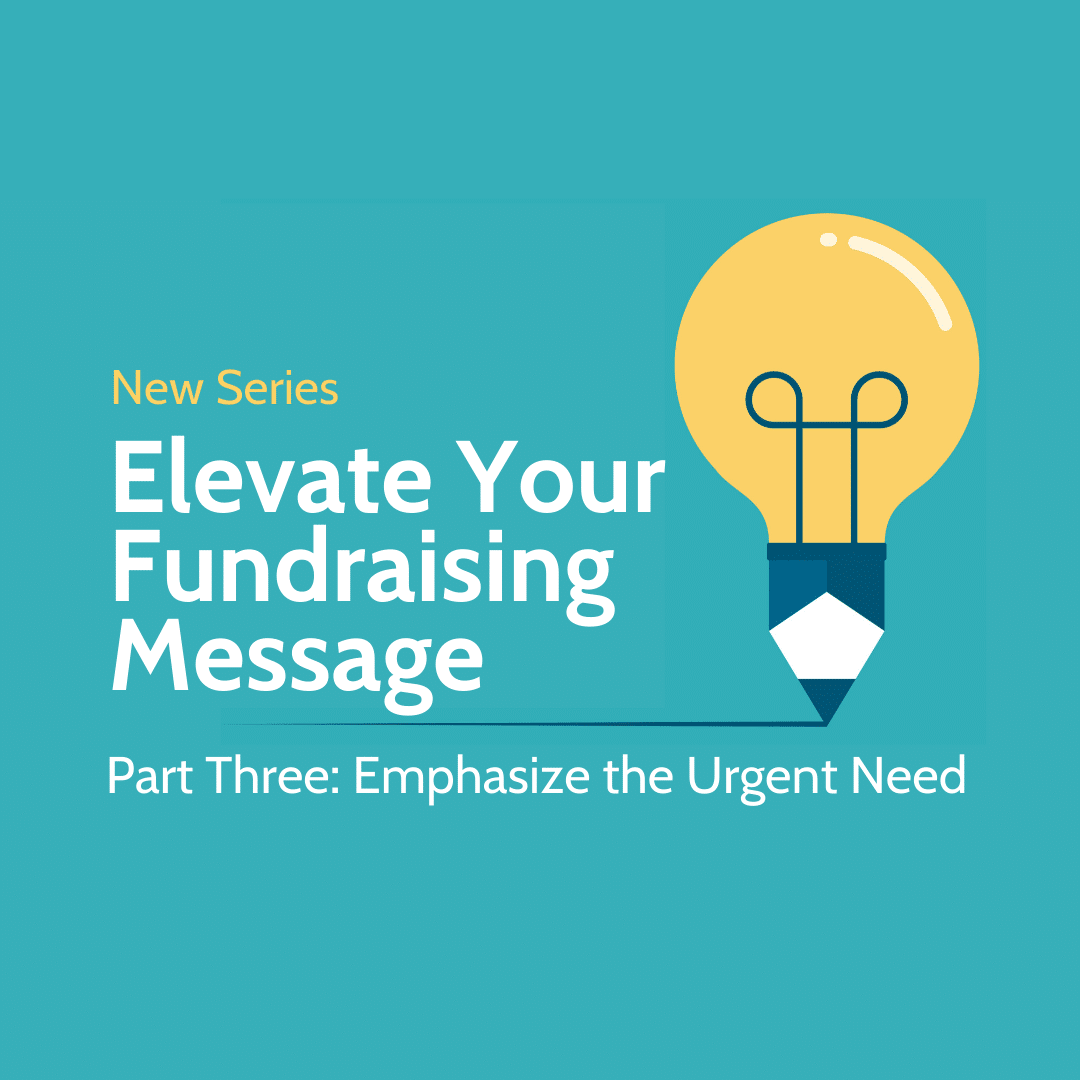Series Note: Recently, I had the opportunity to observe the donor messaging of a small, community nonprofit in the Midwest. I noticed four common issues in their messaging at this nonprofit that plague many others. In this four-part series, I will share four fail-safe strategies for elevating the impact of your donor messaging.
Click below to catch up on the first half of Brent’s series
Part One: “Ratchet up the Emotion“
Part Two: “Focus on Impact“
Donors are more likely to give when they understand the community need to which they are giving and the urgency of that need. Nonprofits exist to fulfill a need. It can be easy to take for granted that the need is understood by your donors. However, DickersonBakker founder, Clark Dickerson, cautions us to “never UNDER-estimate the intelligence of your donors, yet never OVER-estimate their knowledge or understanding of the need.” You need to share the need and the urgency of that need clearly, boldly, and regularly. Otherwise your donor will give to another nonprofit that does.
Share your needs with specificity and urgency. Why not list the number of applicants you currently have? Perhaps you could go even further and create a list of the clients in the cue and their needs. Don’t be afraid to use a story to illustrate the need or a client to serve as an example of a broader need. Doing so helps make the need and urgency more concrete. For example:
This spring, XYZ Agency aims to help five families with home repairs. Altogether, these repairs will cost $15,000 but they couldn’t be more worth doing. One of our recipients is a disabled military veteran. His mobility has deteriorated over the last few years making bathing incredibly difficult. In addition to other repairs, the XYZ Team will completely overhaul his bathroom to make bathing easier and more comfortable. Your support by March 31, 2020, can help purchase needed tile, plumbing supplies, and other materials to complete this and other remodeling projects.
This example has several attributes that help the donor appreciate the need and urgency. First, there is a clear and unambiguous presentation of both the community need (five homes in need of repair) and the financial need ($15,000). Second, an example is provided for how the funds will be invested and the impact of those funds. It wouldn’t be prudent to share how the funds for all five homes would be invested, but one representative example gives the donor a clear picture. Finally, a deadline—March 31, 2020—communicates to the donor that without the funds, the project will not proceed.
Is your agency’s donor messaging clearly communicating the community needs and the urgency in meeting that need? If not, this can be a simple way to elevate your message and your giving.
Be sure to check back next week for the conclusion of Brent’s Elevate Your Fundraising Message series. Is your organization emphasizing the urgent need to your donors? We can help! Contact us today to learn how we can help your nonprofit make a lasting impact on donors & take your fundraising to the next level.


